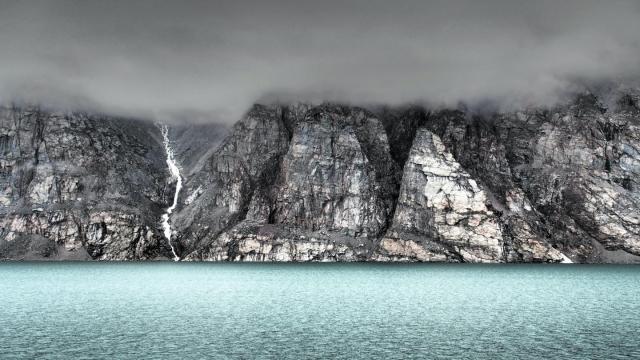It’s Not Just You: The Perseids Really Are Getting Weaker
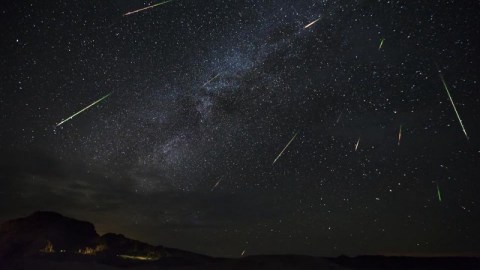
It peaks the nights of August 11–13, but it’s no longer the year’s most reliable meteor shower.
Every year, beginning in mid-July, planet Earth commences passing through an enormous debris stream that extends for more than 15 million kilometers through space: the debris stream of Comet Swift-Tuttle. Plunging through our Solar System and making a close approach to Earth every 133 years, this comet provides the origin of arguably Earth’s most notable meteor shower: the Perseids, which peak annually during the second week in August.
This year, 2021, we can expect excellent viewing conditions. The forecast calls for largely clear skies across most of the world, and what’s normally the biggest obstacle to good viewing — the Moon — will only be in a thin crescent phase, setting before midnight. On the evenings of August 11th and 12th, peaking from about 11 PM until 4 AM in most locations, you’ll be able to see more Perseid meteors than at any other time: about 1-per-minute, or 60-per-hour. Yet just 10 years ago, this is the same rate we saw despite a full Moon, and just ~20% of the maximum rate we saw back in 1993.
It’s not your imagination; the Perseids really are getting weaker. Here’s the science behind why.
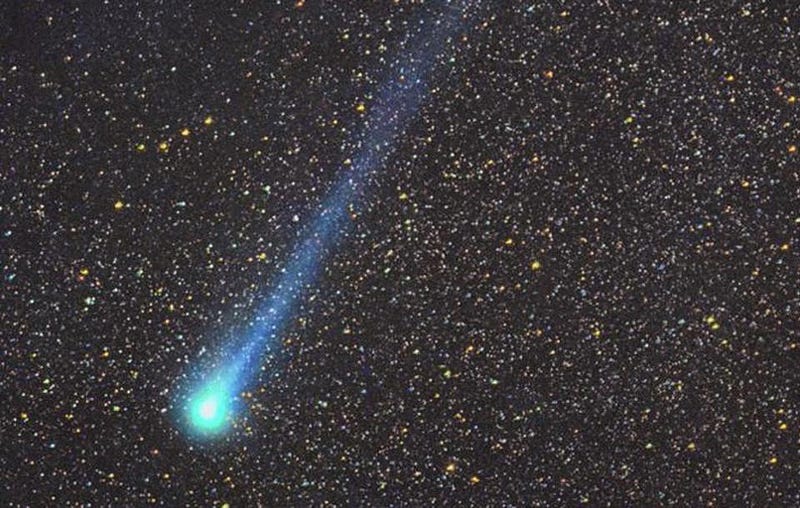
There’s an enormous myth out there about where meteor showers come from: from the dusty tails of comets that pass through our Solar System. It makes so much sense, when you consider what happens to a periodic comet as it nears the Sun. In order, it:
- it begins moving faster, just like all gravitationally bound bodies move fastest at perihelion (their closest point to the Sun) and slowest at aphelion (their farthest point from the Sun),
- heats up as it approaches the Sun, receiving more radiation,
- encounters a stronger solar wind, as the flux of particles from the Sun gets larger as you get closer to it,
- and then the comet becomes active, developing a coma of ionized particles in a halo surrounding the nucleus,
- and eventually developing two tails, a curved dust tail that arises from heating and a straight ion tail that always points directly away from the Sun,
- with the tails getting larger and more pronounced the closer the comet gets to the Sun,
- and, finally, with the reverse process taking place, where everything that “turned on” gets “turned off” again as the comet leaves the Sun, heading slowly back to its farthest point away from the Sun.
Although this picture is absolutely accurate, it fails to explain the most important part: where the cometary debris streams that actually cause the meteor showers we see originate from.
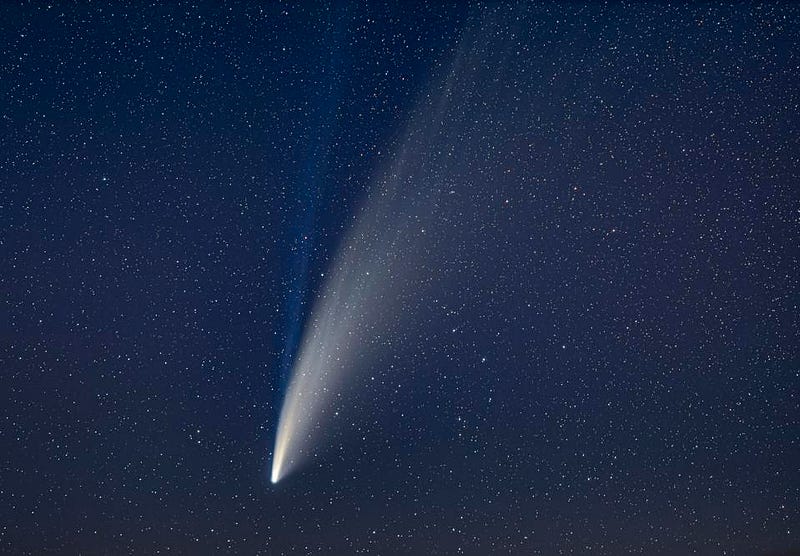
These two tails — the dust tail and the ion tail — do both exist, but neither one plays any role in meteor showers at all. The key to making a meteor shower is to leaving a debris stream that occupies the same orbit year-after-year, so that Earth passes through that stream at the same point on its annual migration around the Sun. But both of these tails fail to do that spectacularly, each in their own ways.
When the comet heats up, both gas and dust get kicked up into the comet’s (temporary) atmosphere: the coma. The dust simply gets heated, where it gets an extra “kick” to its speed. That extra kick combines with its initial motion, creating a tail that fans out in space, trailing the comet, and reflecting the sunlight that allows us to see it. This material gets spread out throughout the plane of the solar system, contributing to the zodiacal dust that we see.
By contrast, the gas gets ionized by the Sun’s ultraviolet radiation, while the solar wind — and the Sun’s magnetic field — sweep these (mostly carbon monoxide) ions into a swift-moving tail. When the electrons recombine with those ions, they fluoresce, giving the ion tail its bluish appearance. Meanwhile, these ions largely get ejected from the Solar System.
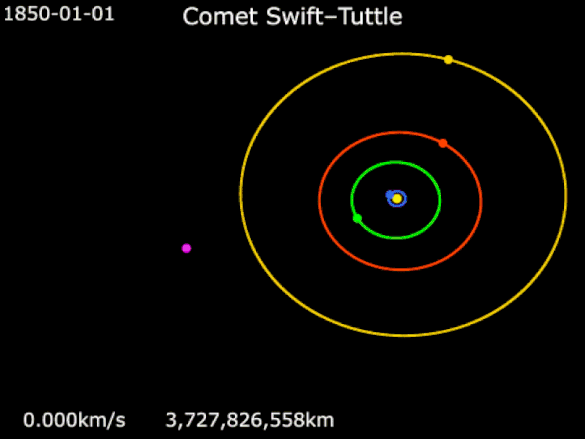
As it turns out, however, comets really do generate meteor showers. If you were to move along with the Sun and watch the comets and planets move throughout the years, decades, and centuries, you’d find that if you traced out the path that comets make in their orbits, when Earth crosses those paths, that’s when the meteor showers arrive.
The Perseids arrive, peaking in mid-August, because that’s when we pass through the path traced out by comet 109P, better known by its common name: Swift-Tuttle, after its two co-discoverers in 1862. This comet has a “P” after it because it’s periodic, with a period of under 200 years. Most comets, including this one, likely originated from the Kuiper belt, consistent with its composition and with the spectrum of elements and ions that were identified when it made its most recent close pass by the Sun: in December of 1992.
Every 133 years (and a few months), Comet Swift-Tuttle completes a full orbit. It’s been doing this for over 2000 years, with numerous sightings recorded in the literature dating all the way back to ~69 BCE. After thousands of years, and with such a large size/mass, Comet Swift-Tuttle has created the most impressive debris stream presently strewn throughout our Solar System.
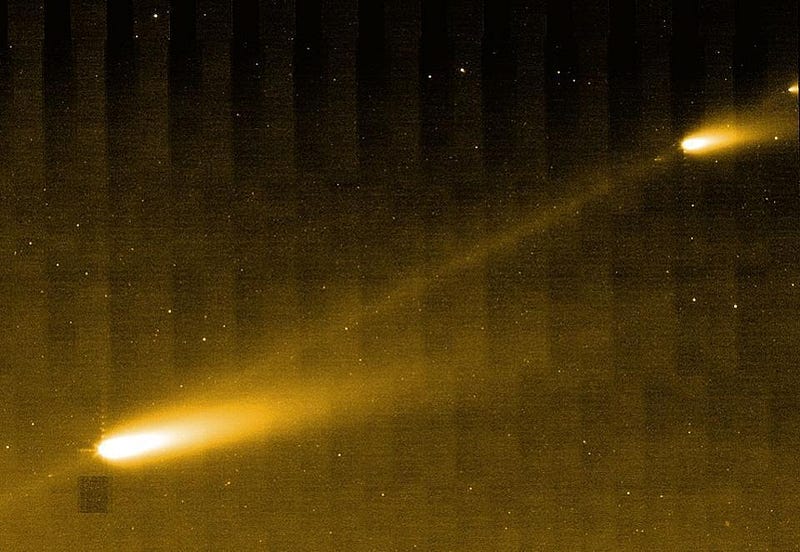
The key to creating this debris is twofold:
- tidal (differential) forces acting on the comet when it passes close to the Sun or a planet,
- and heating of the comet, which doesn’t just generate a coma and two tails, but also experiences fissures and fragmentation events.
We had long suspected that there were small fragments of “comet” that populated the orbit itself, but it was only with infrared observations of a cometary nucleus that not only the fragments themselves but the grainy material between fragments could be directly detected.
Just like anything that gets heated, there will be slight departures from the average speed of the cometary nucleus imparted to these fragments and grains, causing them to spread out along the comet’s orbit. This process takes time: many times the orbital period of the comet must pass before the entire orbit is populated, and even then, there will almost always be a denser “clump” of material that travels very close to the cometary nucleus itself.
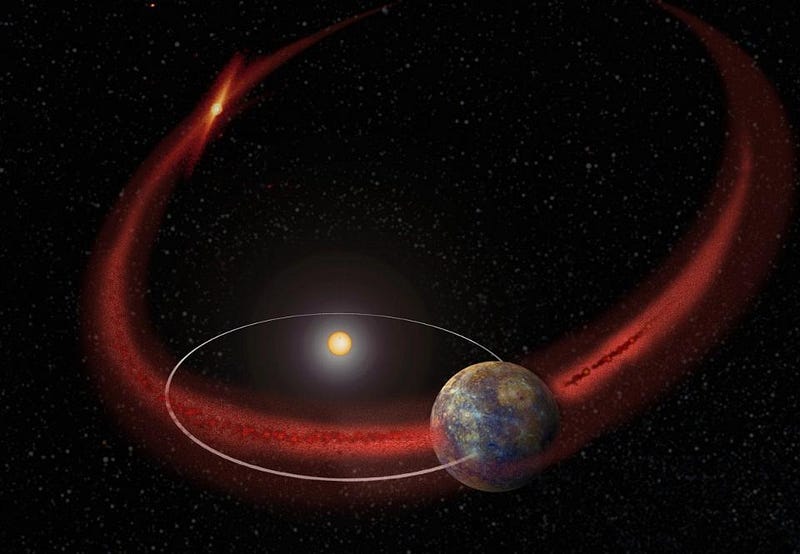
When a comet’s perihelion coincides (or very nearly coincides) with Earth’s orbit, you can get an extreme density enhancement when the Earth passes through that debris stream when the cometary nucleus is close by. This is precisely what happens with the Leonid meteor shower, which recurs every 33 years. Typically, the Leonids are only a modest meteor shower, with maybe ~20 meteors per hour. But every 33 years, an extreme enhancement occurs, and not only do the Leonids put on the best show of the year when that’s the case, they can sometimes cause a meteor storm: where over ~1000 meteors per hour can light up the skies.
Comet Swift-Tuttle doesn’t do that, however, and so the density enhancement effect is less severe. Still, a 133-year orbit, where the last close pass was in 1992, means that the densest region of the debris stream passed us by a little less than 30 years ago, and will continue to get a little less dense until it reaches its minimum some 35–40 years from now. Unfortunately, we didn’t start getting accurate measurements of the zenith horizon rate — the maximum rate — of the Perseid meteor shower until the 1980s, so we can’t precisely say what that minimal rate will be.
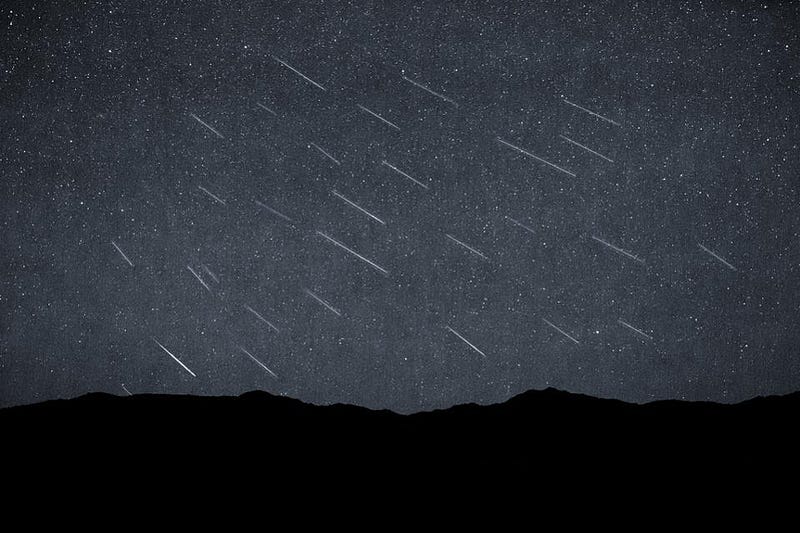
Measuring the rates since the 1980s, however, taught us something interesting: the peak rates in the years surrounding 1992’s perihelion were over ~200 meteors per hour, and in the case of 1993, achieved rates in excess of ~300 per hour. Since that time, rates have been declining. The mid-to-late 1990s saw rates around 100–150 per hour. Although there are a few density enhancements that can arise, such as where large chunks of fragments have broken off and are located, the rate continued to drop throughout the 2000s and 2010s. In recent years, peak rates have been in the ~60–80 meteors per hour range, and that rate may yet drop further.
Comet Swift-Tuttle, which gives rise to the Perseids, should reach aphelion in the late 2050s. Although it isn’t known what the rate will be, some speculate that it may drop to as low as 30–40 meteors per hour (roughly half of what’s expected this year), while others anticipate a much steadier stream, citing the old nature of the Perseids and the long time they’ve have to populate the entire orbit. Although this meteor shower has been gracing the skies for millennia, the next few decades will be critical in learning just how much the density of the debris stream is correlated with the location of the cometary nucleus in its orbit.
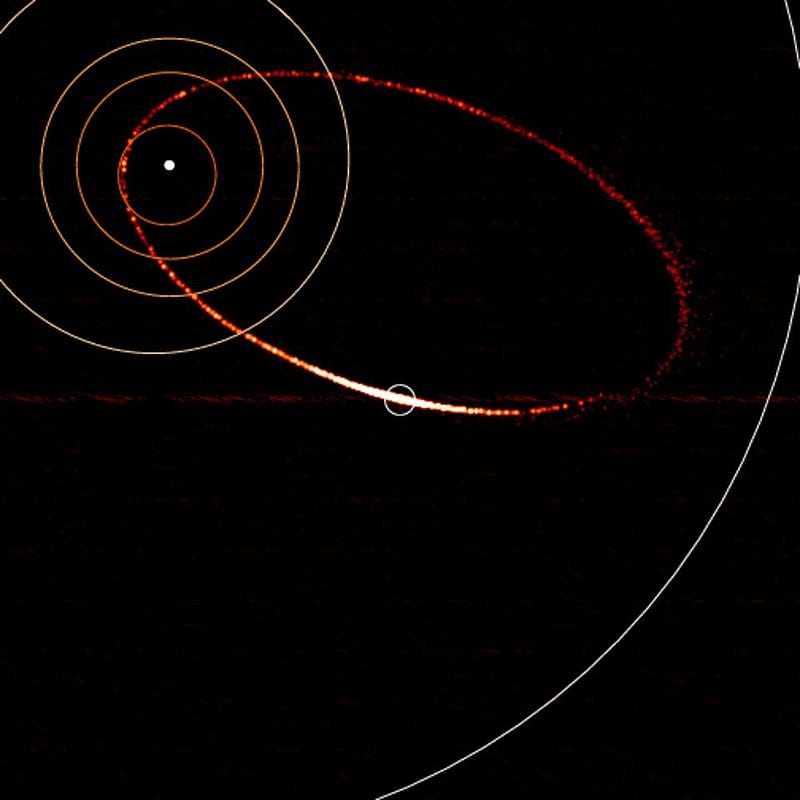
If you’ve been watching the Perseids in the same location for years, you may have noticed that you’re seeing fewer of them. However, that’s likely not driven by the same effect: all over the world, particularly with the rise of outdoor LED lighting, the amount of light pollution has seen a dramatic increase in recent years. As the artificial brightness of the sky increases, the more difficult it is to see the faint objects in the night sky against the backdrop of space.
Just as fewer stars (and only the brightest meteors) are visible when the Moon is out, light pollution from human-created sources can have an even more intense effect. In order to maximize your viewing experience, you’ll want to head out to a rural location where light pollution is minimal; ideally you’ll find a place where the overall natural brightness from the night sky exceeds the brightness from artificial light pollution. These areas are getting increasingly difficult to find all over the world, with Europe and the United States (particularly east of the Mississippi River) facing the greatest challenges.
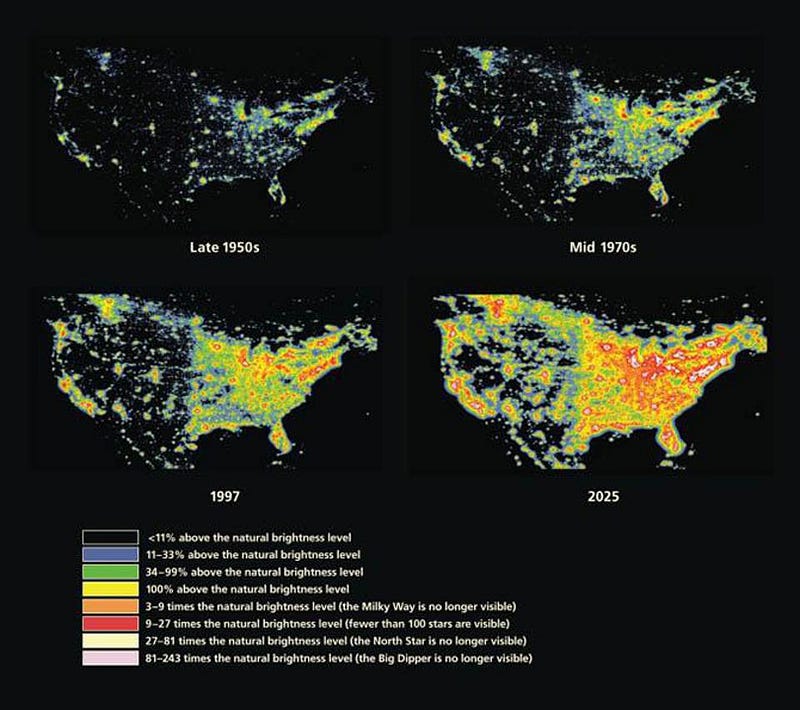
However, if we can overcome the challenges of light pollution, our descendants far down the road might be in store for an even bigger, more reliable show. The Perseids might only be the second most reliable meteor shower for the next few decades, as the Geminids — powered by Asteroid 3200 Phaethon — have recently surpassed them. This is because of a number of factors:
- the Geminids have been around for less than 200 years, with the first reported sighting in 1833,
- Asteroid 3200 Phaethon is on an orbit that takes ~1.5 years to complete, rather than ~133,
- Asteroid 3200 Phaethon passes extremely close to the Sun, getting as close as 0.14 AU (21 million km), causing it to heat and fragment significantly,
- and the Geminids are themselves intensifying with time, with the peak having risen in recent years from under 100 meteors-per-hour at their peak to the 150–200 range these days.
However, the Geminids will be no match for the Perseids in the long run, as Comet Swift-Tuttle is much faster moving (at ~60 km/s relative to Earth), much more massive (approximately ~26 km across), and, perhaps most importantly, passes much closer to Earth than almost any other known asteroid or comet. In fact, Comet Swift-Tuttle will make a dangerously close pass into our neighborhood in 4479, when a close encounter with Earth is anticipated.
If it gets just the wrong gravitational kick from an object like Jupiter, it could strike Earth, which would release more than two dozen times the amount of the energy of the legendary K-Pg impactor: the asteroid that wiped out the dinosaurs.
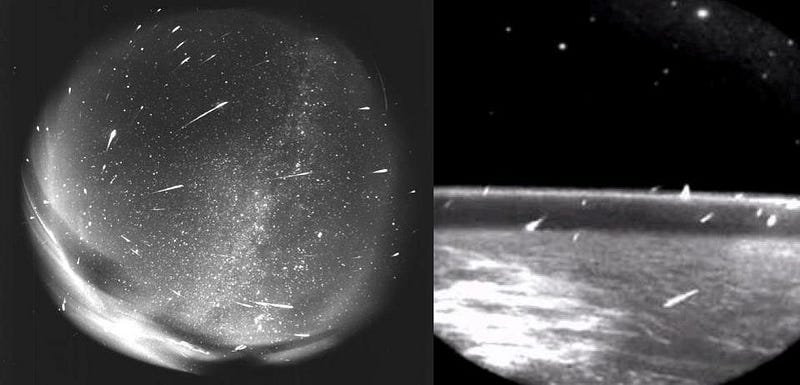
We fully anticipate, however, that Earth will be safe for a long time to come from extinction-level events. Although Comet Swift-Tuttle has rightfully been called, “the most dangerous object known to humanity,” there’s still less than a 1-in-a-million chance of an impact every time it passes close to Earth, and this will remain true for 4479. Instead, with each new orbit, more of this comet’s nucleus will fragment, leading to a larger, thicker, denser debris stream and an overall enhancement of the Perseids with each subsequent pass.
The last peak of the Perseids occurred in 1992/1993, and the next one will appear in 2125/2126: a sight that most of us likely won’t be around to see. While the Perseids may not be quite as spectacular this year as they were 20 or 30 years ago, it’s still an excellent year to go out and take them in, particularly if you can find dark skies. The early setting of the Moon, the largely clear weather forecasts, and the fact that these are overwhelmingly fast-moving, bright meteors means that your best viewing windows come around or just after midnight on the nights of August 11, 12, and 13 this year. Take it all in and enjoy the view; this might be the best show by the Perseids for decades to come!
Starts With A Bang is written by Ethan Siegel, Ph.D., author of Beyond The Galaxy, and Treknology: The Science of Star Trek from Tricorders to Warp Drive.





